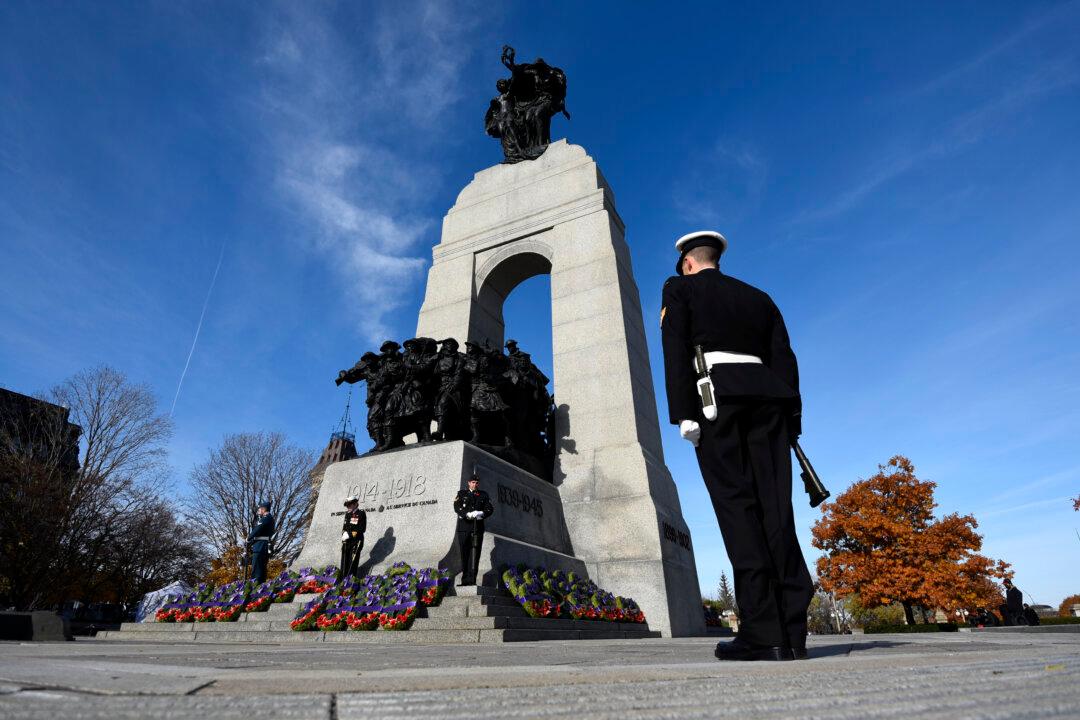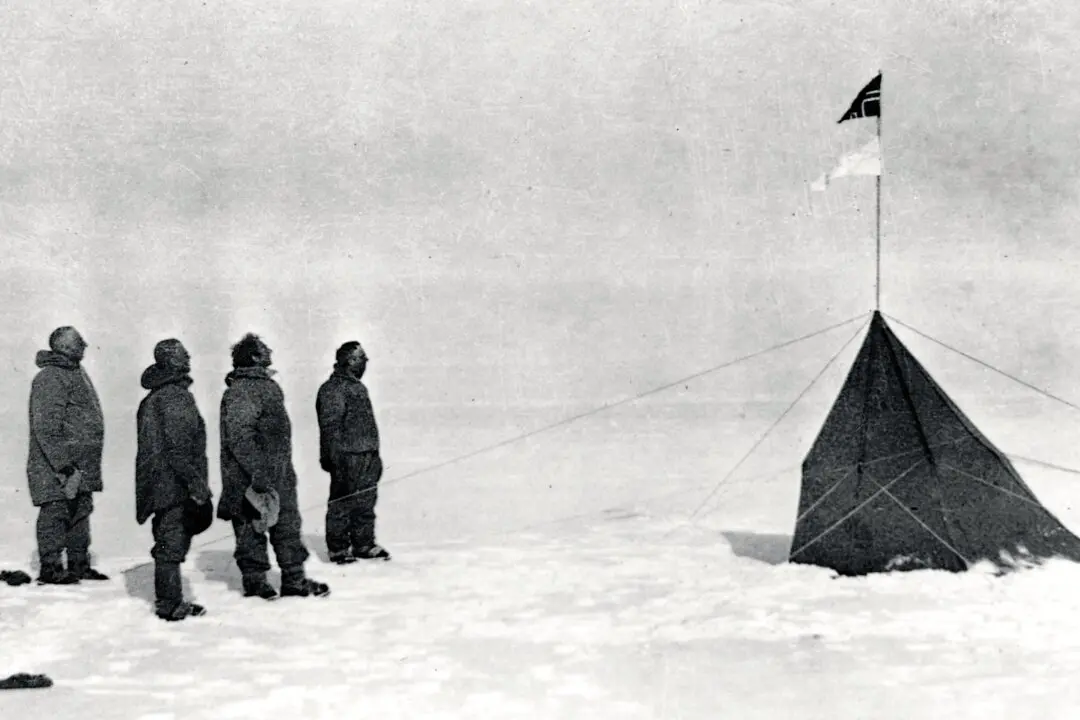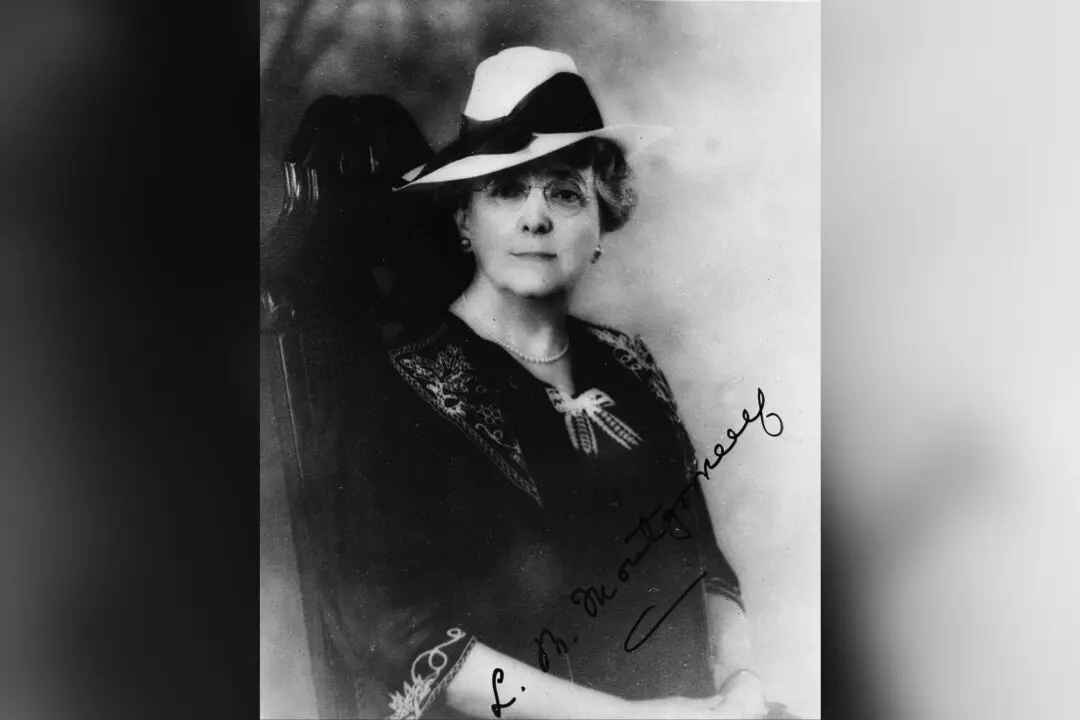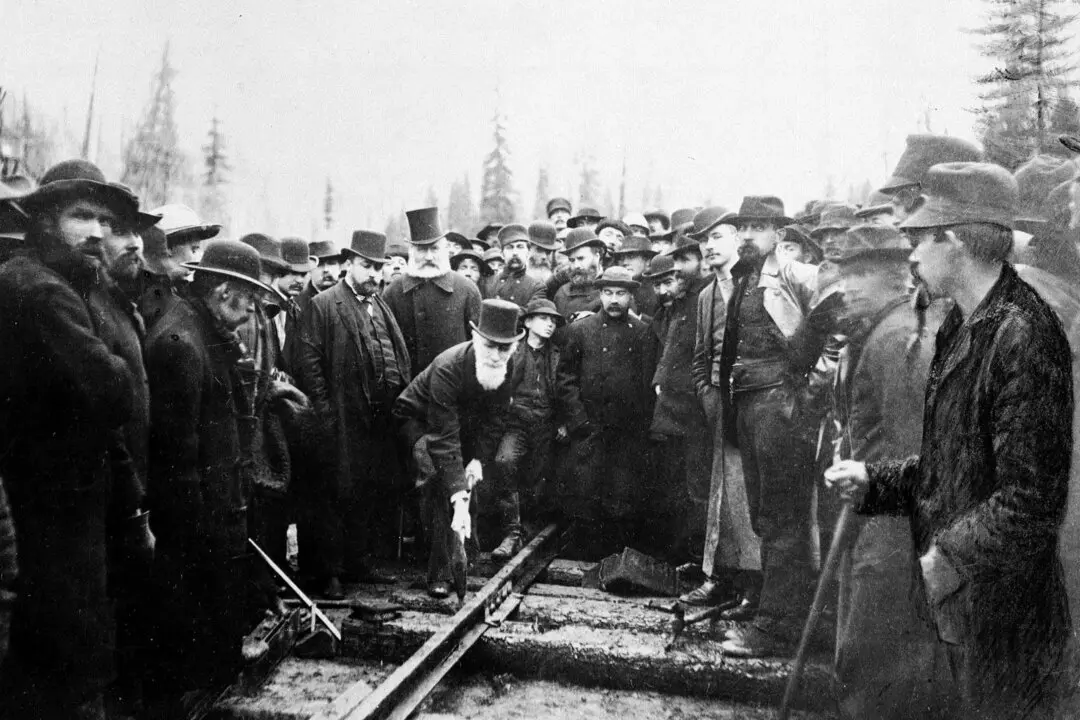Commentary
Every Nov. 11, Canadian eyes turn to Ottawa where, at the eleventh hour, the most solemn ceremony of our Remembrance Day takes place on Confederation Square. In front of the massive bronze National War Memorial statue entitled “The Response” and the Tomb of the Unknown Soldier, the Governor General, politicians, diplomats, veterans, members of the Army, Navy, and Air Force, and a Silver Cross Mother pay tribute to those who died fighting for our country. Similar memorial services take place across the nation.





